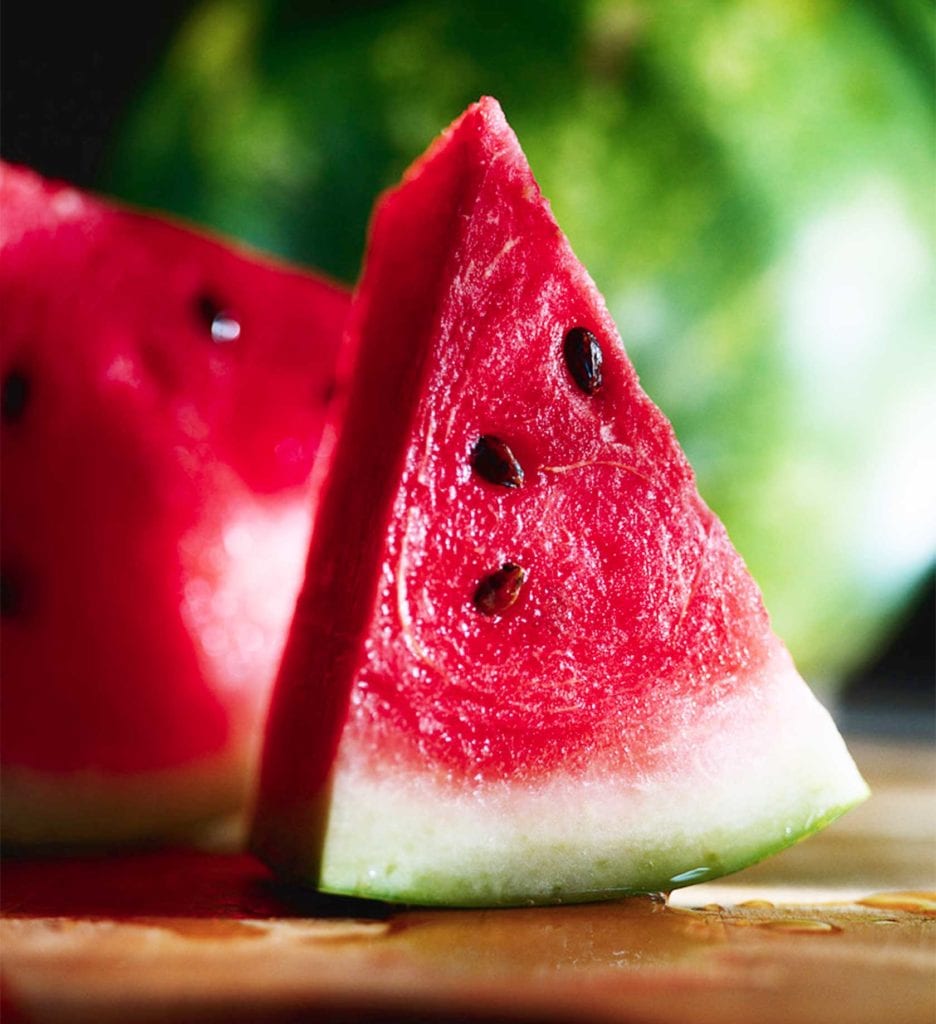Watermelon: Chock full of water and nutrients
July is National Watermelon Month

It seems the watermelon gets little respect. On the list of America’s top seven fruit choices published by the U.S Department of Agriculture, it came in dead last. It even trailed the pineapple. Apples and oranges led the list.
Yet, watermelon can hold its own.
Thirsty? Have a slice. It’s more than 91 percent water, so it can quench your thirst and provide several nutrients at the same time. Watermelon is a good source of vitamins A and C and potassium. Vitamin A boosts the immune system while vitamin C is needed for the growth and repair of tissues throughout the body. Potassium is a mineral that helps nerves and muscles communicate. A diet rich in potassium, when coupled with low sodium, helps maintain normal blood pressure.
Even better – watermelon is easy on the calories. A two-cup serving has only 80 calories and contains no fat, cholesterol or sodium.
It is also a major source of the antioxidant lycopene. Antioxidants are powerful chemicals that destroy dangerous free radicals, those errant molecules that can damage DNA and other fragile cell structures. Some studies suggest that eating foods high in lycopene may reduce the risk of cancer — particularly prostate cancer — heart disease and even stroke.
It is lycopene that gives watermelon its red color. The deeper the red, the higher the content of the antioxidant. While tomatoes are typically touted as the major food source of lycopene, it’s been discovered that on average watermelon has about 40 percent more lycopene than raw tomatoes.
There’s a trick to choosing the best melon. It’s often hit or miss since they all look pretty much alike. The National Watermelon Promotion Board offers a few pointers. Look for ones that are heavy for its size. Remember, watermelons are mostly water. Choose symmetrical melons with a dried stem. The tell-tale sign, however, is the yellowish underside.
Make sure you give it a good rinse before cutting. Although the rind protects the fruit, one can’t be sure what’s lurking on the outside. The melon may be harboring residue from herbicides and pesticides. The Food and Drug Administration advises washing the rind before carving. A quick cleaning will eliminate the chance of transferring germs to the inside when you cut into it.
While watermelon did not win the highest vote in list of favored fruits, it made an impression on the U.S. Senate. So significant is watermelon to one’s health and the agricultural industry in this country, that in 2007, the U.S. Senate unanimously passed a resolution that designates July as National Watermelon Month.
While health professionals often fall flat trying to convince the public to eat healthy, watermelon is an easy sell. It tastes good and is good for you.
Watermelon Strawberry Shake
One container (8 ounces) lemon nonfat yogurt
2 cups cubed, seeded watermelon
1 pint fresh strawberries, cleaned and hulled
1 medium sliced banana
In a blender or food processor, mix yogurt, watermelon, strawberries and banana until smooth and frothy. Serve immediately.
Makes 4 servings
Per serving: Calories: 112, Total fat: 1 g, Carbohydrates: 25 g, Dietary fiber: 2 g, Protein: 4 g, Sodium: 16 mg
Frozen Smoothie Pops
Watermelon strawberry shake
Small paper cups
Popsicle sticks or small spoons
Pour prepared Watermelon Strawberry Shake into small paper cups.
Freeze, inserting Popsicle sticks or plastic spoons when mixture is partially frozen.
Or, pour Watermelon Strawberry Shake into an ice cream machine. Set and enjoy!
Recipes courtesy of National Watermelon Promotion Board



![Banner [Virtual] Art Gallery](https://baystatebanner.com/wp-content/uploads/2024/04/Cagen-Luse_Men-at-store-e1713991226112-150x150.jpg)



